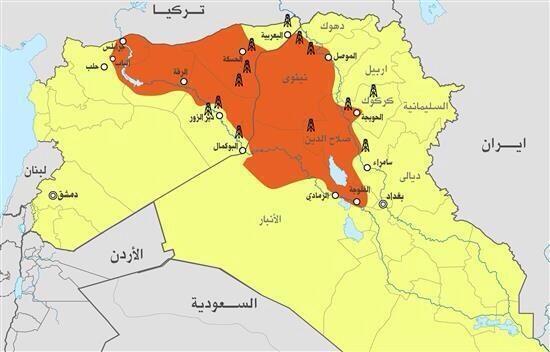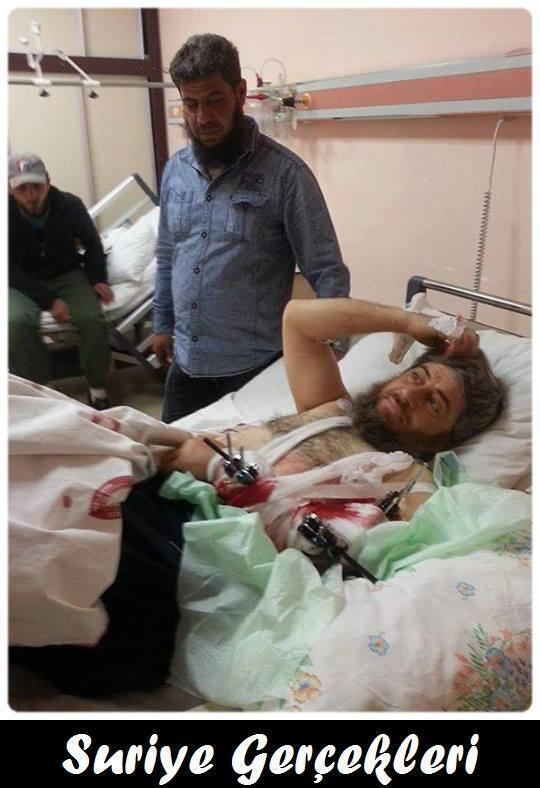
by Brad Hoff
The October 7th edition of the German weekly magazine Der Spiegal includes an introductory article entitled “Eye of the Storm: Life Goes on in Damascus Despite Civil War,” by Dieter Bednarz and Klaus Brinkbäumer (their photo above). It is a lead-in article for the exclusive Assad interview these two journalists were granted. The two seem genuinely surprised at what they find in Damascus – this is hinted at even in the subtitle to the article:
As the civil war rages around them, Syrians in the capital of Damascus continue to support President Bashar Assad despite their fears. They simply want to maintain their way of life.
The journalists speak of busy streets, smiling people, and lively conversation over hookah pipes along the café-lined Damascus historic districts. This finally represents some accurate reporting of “the other side” – that is, those loyal to the regime, or, alternately, those not willing to actively join in rebellion. European publications have generally, over the last two years, been slightly better than American media in this respect. You will never find the following nuanced presentation of the Syrian Civil War from a regime loyalist perspective in a mainstream U.S. publication:
During dinners with politicians and professors, or in conversations in the narrow streets of the old city, everyone, without exception, expressed fear of the rebels. They worry that the rebels will be accompanied by fundamentalists, who will bring with them Sharia law. All the people we spoke with said that they distrust the West because the reasoning there is too simplistic and countries there set moral standards they fail to live up to themselves. And most said that while they don’t support Assad, they want to preserve their way of life. “Just look at what’s happening in Egypt and Libya,” said one man.
The Syrians described in the article recognize what most American media and political elites do not: it is dangerous to view the Middle East in mere blacks and whites. “Simplistic reasoning” leads to simplistic solutions. For the U.S. and NATO, there is one particular glaring demonstration of this still unfolding, and that is Libya.
Syrians are all too aware of what NATO’s latest model intervention has wrought. Ironically, Libyan fighters represent one the largest contingency of foreign jihadists regularly flowing through Syria.
The Der Spiegal journalists express genuine shock at the vibrancy of the city after over a couple years of brutal conflict, and the desire of Damascenes to want to preserve their way of life.
After we finally reached Damascus, spending a few days there are enough to alter our image of the country’s civil war, because people there see it differently than we do in the West. They want to preserve what they have.
The above lines are heartfelt, but there’s a pathetic aspect to the recognition: after two plus years of Der Spiegal coverage of the Syrian conflict, these seasoned journalists are just now getting it. For average Syrians, fear of government collapse is not merely rooted in a desire to “preserve what they have” – but in the awareness that government collapse means the total fragmentation of the last vestiges of civil secular order in Syria, and the imposition of Taliban style rule.
Consider, by looking at the below photo of “liberated” Sirte, Libya, why the majority of Damascenes and other anti-rebel Syrians don’t want “regime-change”…

The above photo, though widely circulated in media in other parts of the world, is one that not many Americans have seen. It is solely the work of the rebels in conjunction with NATO, who exacted revenge on Gaddafi’s favored city, by cleansing it of all inhabitants, and utterly destroying the city’s infrastructure. These are the bitter fruits of the “Arab Spring” – no wonder Damascenes are not so enthusiastic.
Also not shown on the major American networks, were images of Libyan society prior to the NATO intervention. We were told that the U.S. must intervene for the salvation and betterment of the Libyan people, yet few in the West understood Libya and her difficult history – and certainly not the forces that would be unleashed should the state system collapse. We must bomb the country in order to save it. This, the same logic used at the beginning of September this year in the case of Syria.

Like with Syria now, media coverage of Libya almost exclusively focused on the plight of the rebel side. Only this side of the conflict was allowed to be humanized. Americans really had no idea of what Libyan cities even looked like – the very cities which were to be on the receiving end of Western bombing raids.
Western media and government disinformation campaigns are made easier so long as the general population is kept in ignorance of the realities of Middle East societies. When the time comes for government and media to make the case for “humanitarian war” (as interventions going back to Kosovo have come to be called), manufacturing the consent of the people becomes all the easier. Though the proposed case for bombing Syria failed in September, manufacturing consent for regime change in Syria is still a continuing process.
It is easy for Americans to believe that “they need us” – while yet failing to see the complexities and nuances that exist in reality. We assume that generally Middle Eastern “backwardness” and infighting must be remedied by our superior vision and simple solutions. This mentality will continue so long as Americans are affirmed in their flawed vision of the Middle East and the problems that these countries face.
This flawed vision is best seen reflected in popular movies and TV series. Consider this scene from the 2012 season of the award winning Showtime series, “Homeland,” which depicted Beirut’s Hamra Street as a dusty den of AK-47 wielding radicals and covered women:

In reality, Hamra Street is one of Beirut’s most fashionable, modern, urban streets lined with cafes, bookstores, banks, and bars. Walking along Hamra St., it would actually be difficult to find head-to-toe clad Islamic conservatives. Urban Lebanese women have a reputation of being among the most carefree and immodest in the Middle East.
Here are a couple of typical scenes from the real Hamra St:


You can find similar scenes in today’s Damascus, and other urban centers of Syria. This is why the Der Spiegal photo at the top of this page is such a welcome change in coverage of the Syrian crisis – it humanizes a people and a city that in September we were preparing to bomb. The photo reveals people living lives not much different from those in the West – modern people desiring some semblance of stability and normalcy.
They don’t want to see their country on fire in the midst of what is now an international proxy war. They don’t want their city to become the next Sirte. They don’t want to live under the Islamic extremists who’ve promised them Sharia law. They are complex, real people whose reasons for not siding with the rebellion may be much more nuanced than we are willing or able to recognize.

 Produced by ISIS media, the Arabic reads “Firing the TOW missile system against the apostates.” The set of photos released together, which can be
Produced by ISIS media, the Arabic reads “Firing the TOW missile system against the apostates.” The set of photos released together, which can be 
 A nice infographic from
A nice infographic from  It is well-known that NATO member Turkey has long kept an open border policy for Islamist insurgents, including Nusra Front and other Al-Qaeda aligned groups, to freely access Northern Syria.
It is well-known that NATO member Turkey has long kept an open border policy for Islamist insurgents, including Nusra Front and other Al-Qaeda aligned groups, to freely access Northern Syria.






